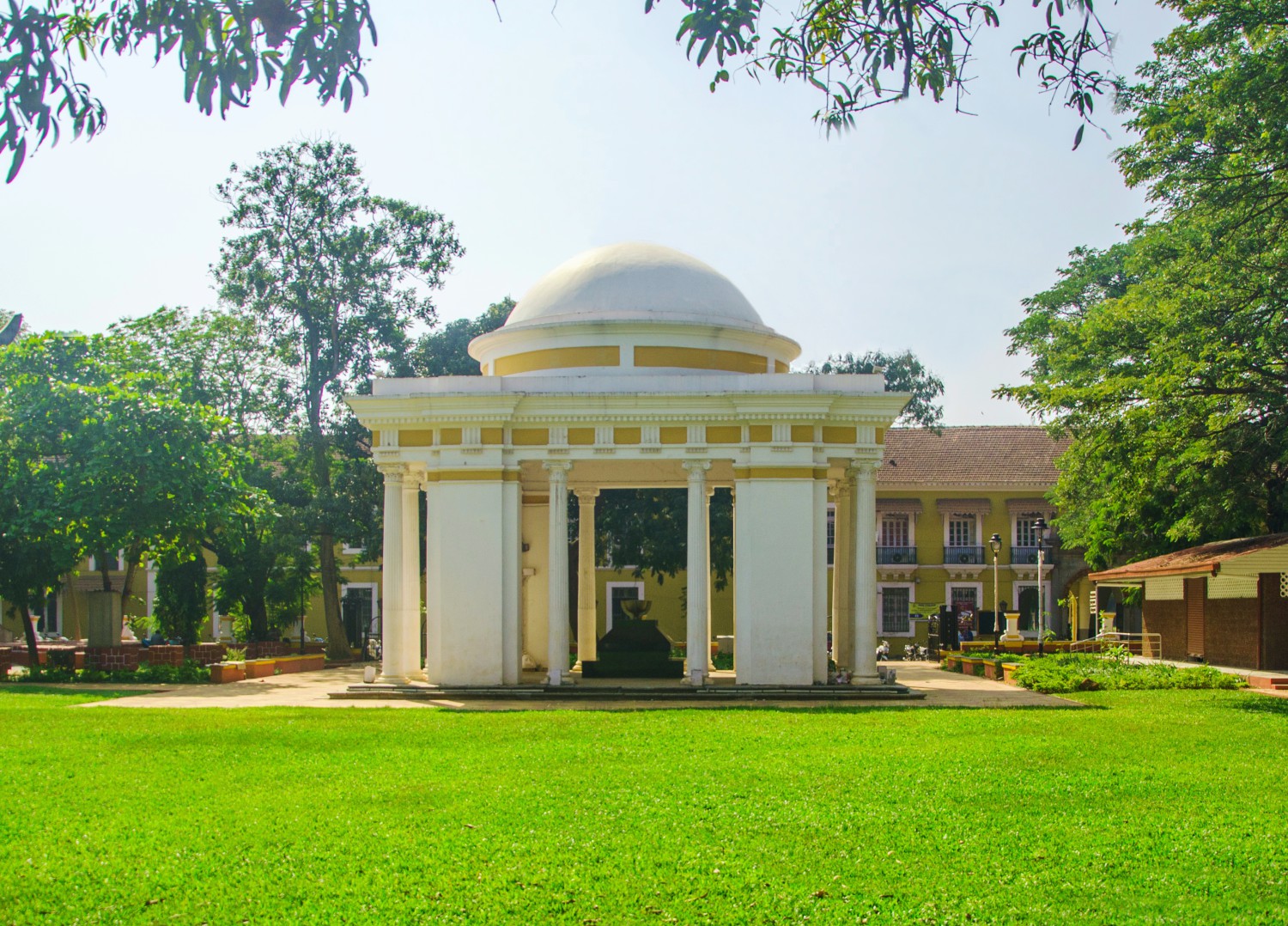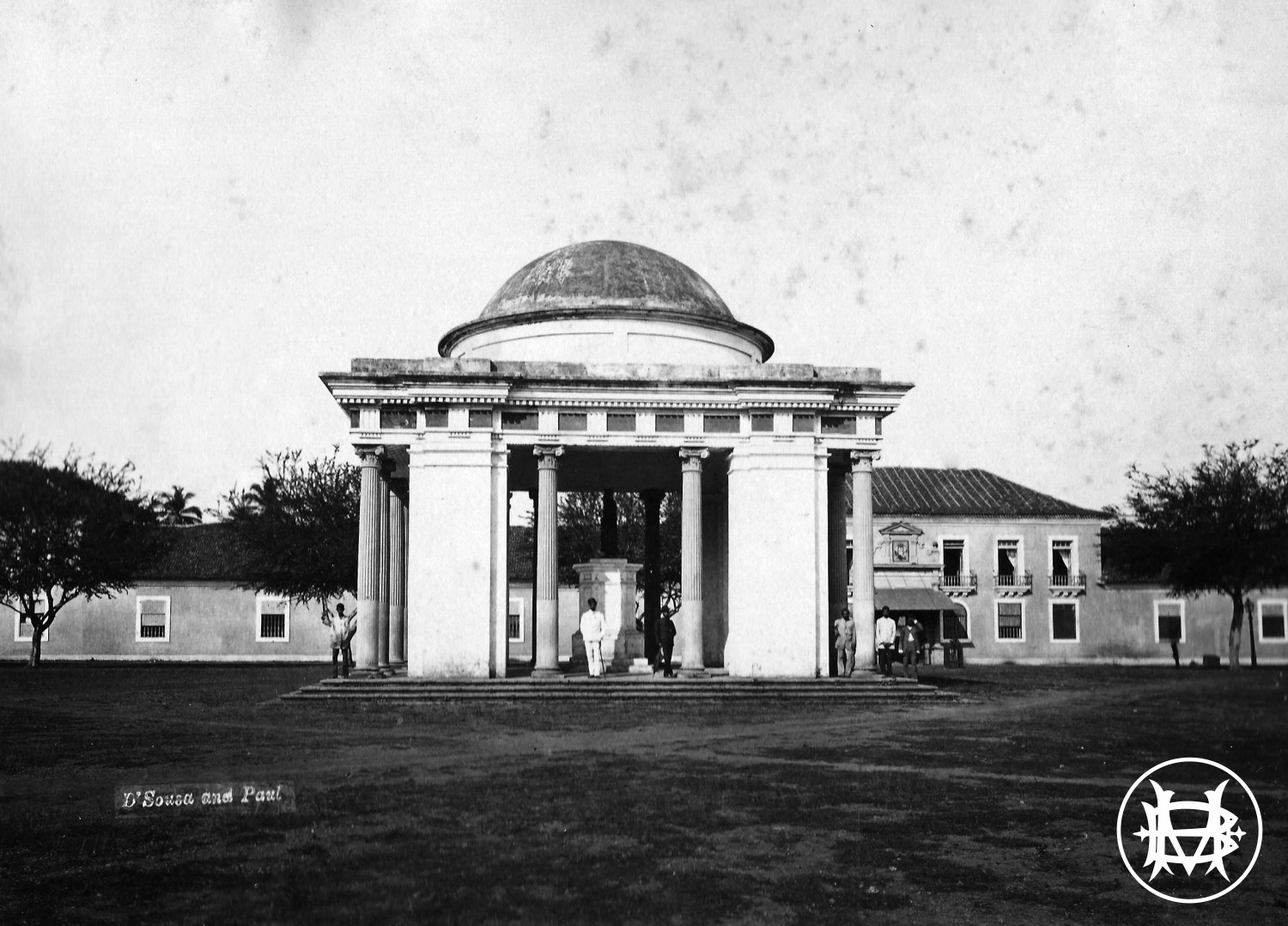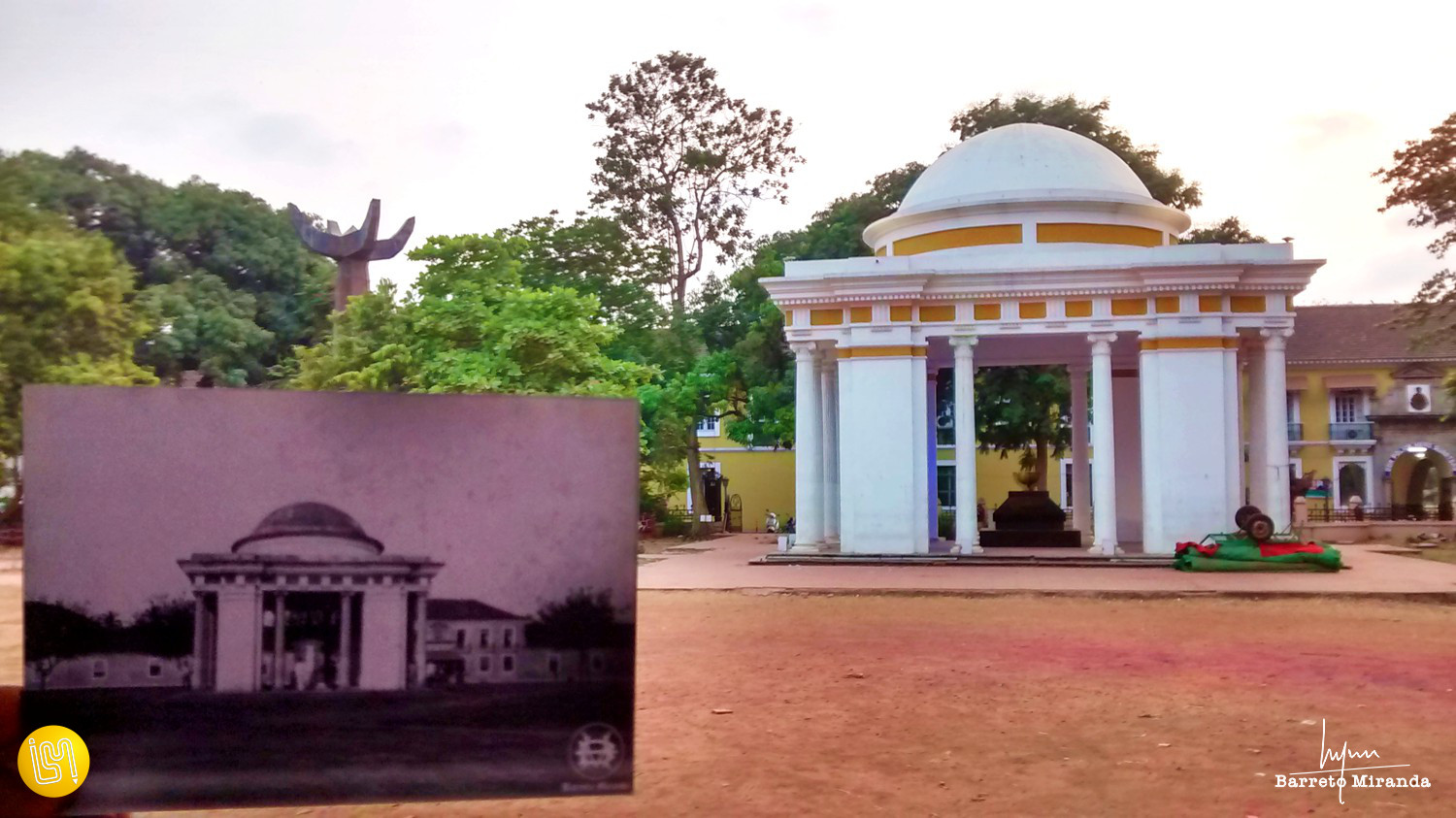

Azad Maidan is a significant martyrs’ monument and an open ground situated opposite the Goa Police headquarters in Panaji.
History
On February 17, 1843, the Portuguese Government laid the foundation for this iconic monument in Panjim to honor Afonso de Albuquerque, the 1st Duke of Goa, who was a distinguished Portuguese general, admiral, and statesman. His notable tenure as viceroy of Portuguese India from 1509 to 1515 saw remarkable expansions of Portuguese influence across the Indian Ocean, solidifying his reputation as a formidable and skilled military commander.
Originally designed as a square, the site was known as the Praça de Sete Janelas (Square of the Seven Windows), likely named after the adjacent building that featured a ground floor and three sets of seven windows on its first floor. Today, this iconic ochre-colored building houses the Government Printing Press, Goa Police Headquarters, and the Institute Menezes Braganza Hall.
The monument’s architecture draws inspiration from the Temple of Glory in Ancient Rome. Legend has it that the beams and granite pillars used for its construction were transported from the Convent of S. Domingos in Velha Goa, while the dome’s pillars and columns were sourced from the College of St. Thomas Aquinas, located on a hillock of Conceição, close to the Panjim Church. The two-meter-tall bronze statue of Afonso de Albuquerque was installed here on October 29, 1847 after being moved from the frontispiece of the Recolhimento da Serra at Velha Goa.
Post-liberation
Following Goa’s liberation in 1961, some people vented their anger by toppling and damaging the statue of Albuquerque. Later, the statue was relocated and is currently displayed at the Archaeological Survey of India Museum in Old Goa.
Today, this aesthetically domed structure has been transformed into a memorial dedicated to one of Goa’s renowned freedom fighters, known as ‘The father of Goan nationalism,’ Tristão de Bragança Cunha (1891-1958). His relics are preserved in a shiny brass urn, placed on a black granite pedestal.
Martyrs’ Memorial
The Freedom Fighters’ Association erected a martyrs’ memorial at the Maidan, funded by public donations, to honor the brave individuals who sacrificed their lives during the Goa liberation movement. The memorial stands 14 meters high and features a crest displaying a four-armed structure with a pyramid atop these arms. The four-armed design symbolizes the participation of freedom fighters from all corners of India in the Goa liberation movement, while the pyramid represents the sacrifices made by these valiant souls. Initially constructed with cement, it was later adorned with granite.
On either side of the monument, two rectangular pillars proudly bear the names of 67 freedom fighters, many of whom hailed from beyond the state borders, with one of the satyagrahis even coming from Bangladesh, all of whom laid down their lives for Goa’s liberation.
This memorial was designed by Architect J. R. Ralino de Souza and unveiled on 23rd March 1973 by Lieutenant General Kunhiraman Palat Candeth, the leader of the Indian Armed Forces during the liberation of Goa on 19th December 1961 and the first military governor of liberated Goa. The construction engineers responsible for its construction were S V Gadgil and Audhut Kamat.
A stanza composed by the poet Balakrishna Bhagwant Borkar has been etched on the memorial as follows:
धन्य लोहिया, धन्य भूमी ही
धन्य तिचे पुत्र
धन्य तयाचा त्याग देखते
जनतेचे नेत्र
Translated as:
Blessed is Lohia, Blessed is this land and her sons.
Blessed to see the fruits of their struggle and sacrifice, are we the people.
Today, Azad Maidan serves as a significant venue for meetings and protests, providing a platform for democratic expression. It has evolved into a melting pot for Goans, where diverse opinions are voiced, and various issues are openly discussed.

